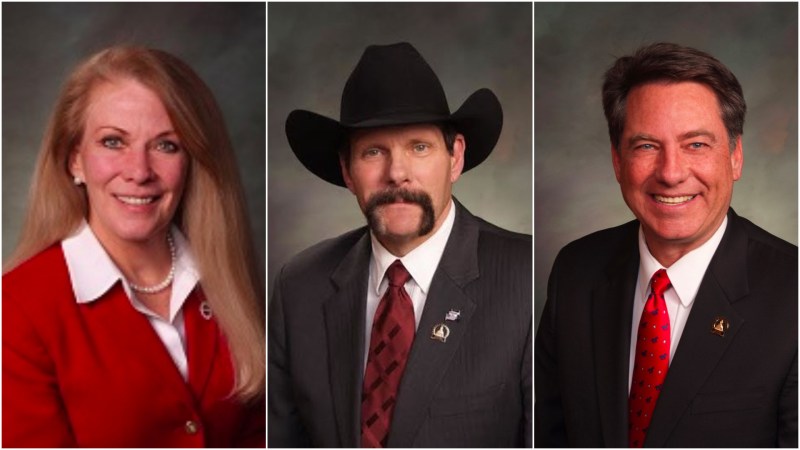Colorado Senate Republicans Kill “Safety Stop” Bill

Republicans at a Senate Transportation Committee hearing blocked the “Safety Stop” bill from moving forward Tuesday in a 3-2 vote on party lines. The bill, modeled after a longstanding law in Idaho, would have let people on bikes treat stop signs as yields and red lights as stop signs.
The 21 residents from all over Colorado who spoke in favor of the bill included former Republican senator Greg Brophy. Only five testified against it. But that wasn’t enough to sway Republican senators Randy Baumgardner, Jerry Sonnenberg, and Vicki Marble, who voted against the bill, which was sponsored by Democrat Andy Kerr. (Democratic senators Rachel Zenzinger and Nancy Todd voted to move the bill forward.)
Brophy, a Republican, called Kerr’s bill “a good, common sense, conservative approach.”
Kerr believes the bill would have passed had it gotten out of committee, he told Streetsblog. “I know for a fact that this is not a partisan bill, because I’ve talked to Democrats who don’t support it and Republicans who do,” he said, adding that he thinks Republican leaders wanted “to make this bill go away quietly now.”
Kerr said he will try again to get the bill passed in 2018.
People who spoke in favor of the rule change said it would make them safer. Under current law, bicyclists have to wait for traffic to build up at intersections and then jockey for space and visibility when it’s time to move. The bill would enable bike riders to avoid that situation and clear intersections more quickly.
Additionally, traffic sensors don’t usually recognize people on bikes, forcing people to dismount and push a pedestrian beg button to cross the intersection legally. The rule change would have eliminated that problem.
People who testified against the bill claimed it would increase crashes but presented no evidence in support of the assertion. In fact, experience shows giving cyclists more discretion at intersections improves safety: Bike crashes dropped 14.5 percent in Idaho the year after lawmakers enacted a similar policy.
Today drivers injure fewer people biking in Idaho, per capita, than in Colorado. Mountain municipalities like Summit County have a similar law that has worked well, according to a white paper from the Denver Mayor’s Bicycle Advisory Committee.
Several people scoffed at the idea that the law should treat people riding 30-pound bicycles differently than people operating two-ton motor vehicles encased in steel frames. But state law already has special rules about cycling. If you’re on a bike and moving slower than car traffic, for instance, the law says you can ride on the right side of a lane.
Dave Hall, the legislative liaison for the Colorado State Patrol, told senators the bill should not move forward because some people lack the “cognitive ability” to ride a bike and scan an intersection for danger at the same time.
Only one senator, Marble, explained her “no” vote. Her argument, essentially, was that one bad apple spoils the whole bunch. She shared this anecdote: “I was in my Hummer, and I was easy to spot, and [a bicyclist] saw me, and he had a stop sign, and I saw that he was speeding up, not slowing down. I put on my brakes, he went by, gave me the one finger salute… Had I not slowed down, he would’ve T-boned me and I would’ve felt absolutely devastated.”
Assuming that’s how things really played out, the bicyclist’s actions would remain illegal under the Safety Stop bill. Cyclists approaching an intersection would still have to yield the right of way to other traffic that arrives first.
“We’re trying to differentiate the safe cyclists from the jerks,” Kerr said. “This isn’t about protecting the jerks. This is about shining a spotlight on the jerks… so that law enforcement doesn’t have to spend time dealing with the folks who are already riding safely.”
“The folks who have testified that they believe this [bill] will increase crashes didn’t present any data because there isn’t any,” said Bicycle Colorado Executive Director Dan Grunig. “The data shows that it improves safety.”


